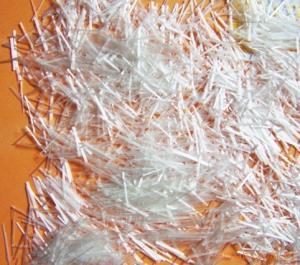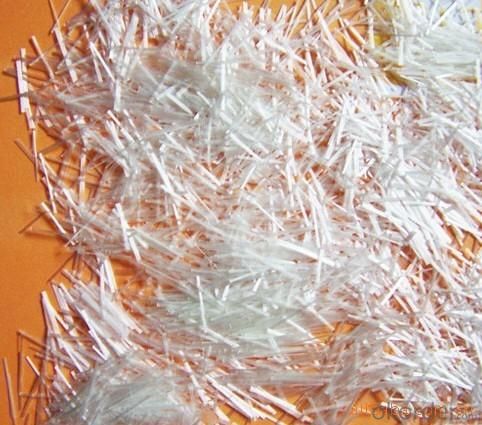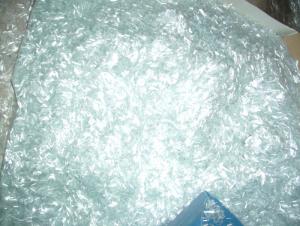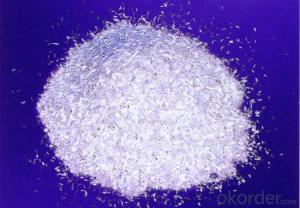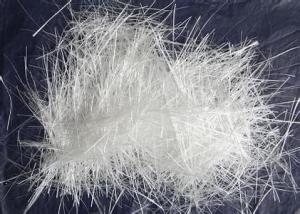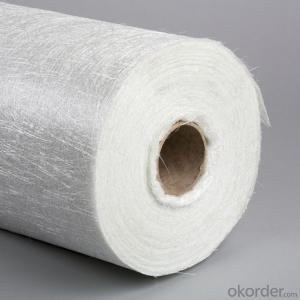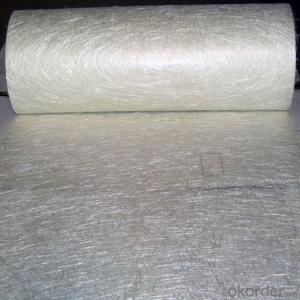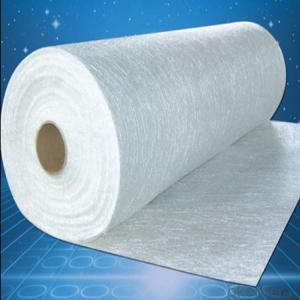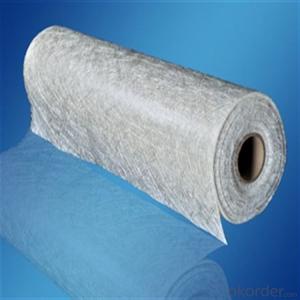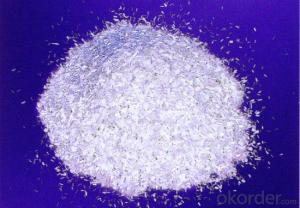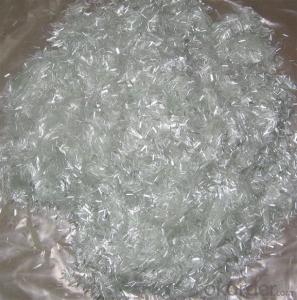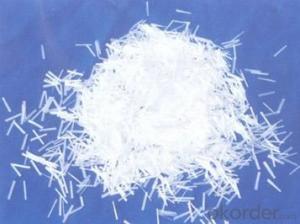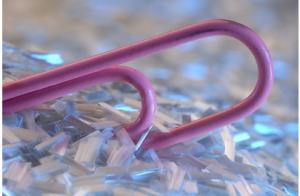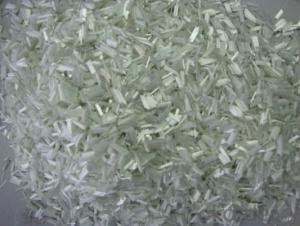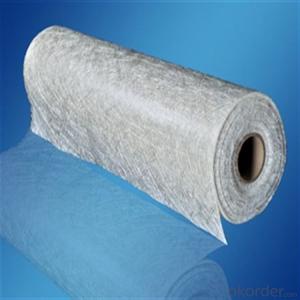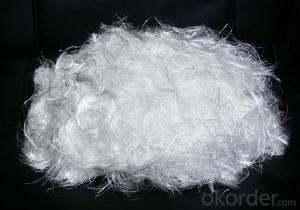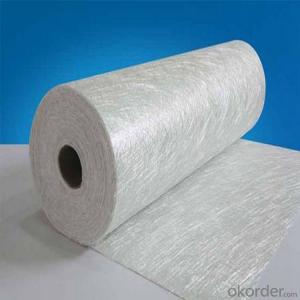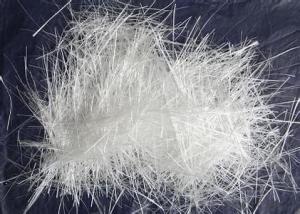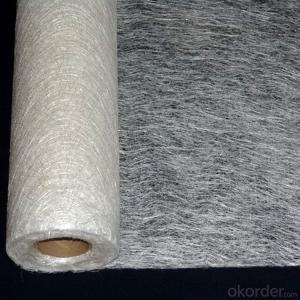E-Glass Fiber Chopped Strands For Thermoplastics
- Loading Port:
- China Main Port
- Payment Terms:
- TT or L/C
- Min Order Qty:
- 1 ton kg
- Supply Capability:
- 500 Tons Per Month kg/month
OKorder Service Pledge
OKorder Financial Service
You Might Also Like
Introduction of E-Glass Fiber Chopped Strands For Thermoplastics
E-Glass Chopped Strands for Thermoplastics is designed for extrusion and injection molding processes,widely used in automotive, electric appliance,and home appliance
Product Features of E-Glass Fiber Chopped Strands For Thermoplastics
1.Excellent strand intergrity,low static,low fuzz,and good flowability.
2.Good bonding with resins,insuring excellent surface appearance
3.Excellent mechanical properties
Packaging of E-Glass Fiber Chopped Strands For Thermoplastics
The product can be packed in bulk bags, heavy-duty box and composite plastic woven bags;
For example:Bulk bags can hold 900kg-1000kg each;Cardboard boxes and composite plastic woven bags can hold 15kg-25kg each.
Storage of E-Glass Fiber Chopped Strands For Thermoplastics
Unless otherwise specified, fiberglass products should be stored in a dry, cool and rain-proof area. It is recommended that the room temperature and humidity should be always maintained at 15ć-35ćand 35%-65% respectively.
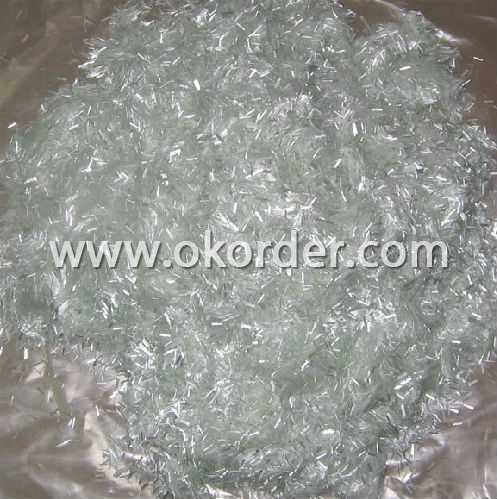
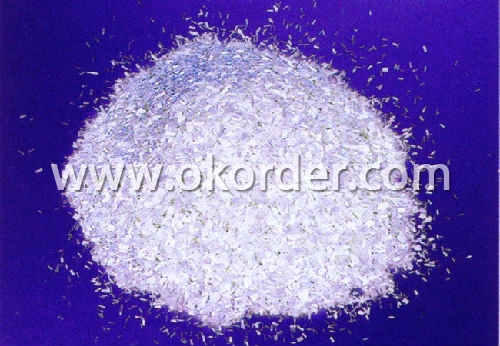
- Q: How is fiberglass chopped strand used in the wind energy industry?
- Fiberglass chopped strand is extensively used in the wind energy industry for reinforcing composite materials used in manufacturing wind turbine blades. It is mixed with resin to create a strong and lightweight composite, providing the necessary structural integrity and stability required for the blades to withstand high wind speeds. The chopped strands enhance the overall strength and durability of the blade, ensuring optimal performance and longevity in generating clean and renewable energy from wind.
- Q: What are the different packaging options for fiberglass chopped strand?
- Fiberglass chopped strand offers various packaging options to cater to the specific demands and preferences of customers. 1. Bags: Fiberglass chopped strand can be conveniently packaged in bags of different sizes, ranging from small kilograms to large several hundred kilograms. These bags are usually constructed from durable materials like plastic or woven polypropylene, ensuring the product's integrity during storage and transportation. 2. Bulk packaging: Customers requiring substantial quantities of fiberglass chopped strand can avail themselves of bulk packaging options. This may include bulk bags or FIBC (Flexible Intermediate Bulk Container), capable of accommodating several tons of chopped strand. This packaging type is commonly utilized in industrial settings where large volumes of material are necessary. 3. Pallets: Pallets serve as another packaging solution for fiberglass chopped strand. In this scenario, the chopped strand is either bagged or wrapped with protective films and placed on wooden or plastic pallets. This alternative facilitates the easy handling, storage, and transportation of the material, particularly for customers requiring frequent or regular deliveries. 4. Custom packaging: Tailored packaging options can be arranged based on the specific requirements of customers. This may involve specialized packaging materials, labeling, or additional protective measures to ensure the quality and safety of the fiberglass chopped strand during transit and storage. Overall, the packaging options for fiberglass chopped strand are diverse, adapting to the quantity, application, and individual needs of customers. The primary objective is to deliver a secure, convenient, and reliable solution for the handling and transportation of the product to its intended destination.
- Q: How is fiberglass chopped strand used in the transportation industry?
- Fiberglass chopped strand is widely used in the transportation industry for reinforcing various components. It is commonly used in the manufacturing of automotive parts such as bumpers, hoods, and interior panels. The chopped strands are typically mixed with resin to create a composite material that offers strength, durability, and lightweight properties. This enables the production of lighter vehicles, improving fuel efficiency and reducing emissions. Additionally, fiberglass chopped strand is also used in the construction of boats, airplanes, and other transportation modes to enhance their structural integrity and performance.
- Q: How is the abrasion resistance of fiberglass chopped strand composites tested?
- The abrasion resistance of fiberglass chopped strand composites is typically tested using standard industry methods such as the Taber Abrasion test or the ASTM D4060 test. These tests involve subjecting the composite material to controlled abrasion using rotating wheels or abrasive media, and measuring the weight loss or change in appearance after a specified number of cycles. This helps evaluate the material's ability to withstand wear and tear in various applications.
- Q: The uses of middle alkali glass fiber chopping fabric?
- It is used for high quality asbestos tiles and glass fiber reinforced cement.
- Q: Is fiberglass chopped strand suitable for automotive interior panels?
- Yes, fiberglass chopped strand is suitable for automotive interior panels. Fiberglass chopped strand consists of short strands of glass fibers that are randomly dispersed and bonded together. This material is lightweight, strong, and has excellent dimensional stability, making it an ideal choice for automotive interior panels. It provides excellent strength-to-weight ratio, which is crucial for ensuring the panels can withstand the rigors of daily use while minimizing the overall weight of the vehicle. Additionally, fiberglass chopped strand has good resistance to chemicals, heat, and impact, further enhancing its suitability for automotive applications. Its versatility allows for easy molding and shaping into complex panel designs, ensuring a perfect fit for the interior components of automobiles. Overall, fiberglass chopped strand is a reliable and durable material that meets the specific requirements of automotive interior panels.
- Q: Is fiberglass chopped strand suitable for aerospace interior components?
- Yes, fiberglass chopped strand is suitable for aerospace interior components. Fiberglass is a lightweight and durable material that offers excellent strength-to-weight ratio, making it ideal for aerospace applications. Chopped strand fiberglass is often used in the manufacturing of interior components such as panels, partitions, and cabin linings. It provides good mechanical properties, including high tensile strength and impact resistance, which are essential for ensuring the safety and performance of aerospace interiors. Additionally, fiberglass is fire-resistant and can meet the stringent fire safety requirements of the aerospace industry. Overall, fiberglass chopped strand is a reliable and widely used material for aerospace interior components.
- Q: How does the fiber content affect the thermal conductivity of fiberglass chopped strand composites?
- The thermal conductivity of fiberglass chopped strand composites is significantly affected by the fiber content. As the amount of fibers increases, the thermal conductivity decreases. This occurs because the fibers function as obstacles to the heat flow in the composite material. They generate air pockets between them, acting as insulators and slowing down the heat transfer. Additionally, the fibers themselves possess lower thermal conductivity when compared to the surrounding matrix material. When the fiber content is low, there are fewer fibers hindering the heat flow, resulting in higher thermal conductivity. Conversely, as the fiber content rises, the density of fibers in the composite increases, forming more obstacles and diminishing the ability of heat to pass through. Hence, it can be concluded that fiberglass chopped strand composites with higher fiber content exhibit lower thermal conductivity, making them more efficient as insulation materials. This characteristic renders fiberglass chopped strand composites suitable for a variety of applications that require thermal insulation, such as in buildings, automotive components, and aerospace structures.
- Q: Is fiberglass chopped strand compatible with other reinforcement materials?
- Indeed, fiberglass chopped strand harmonizes well with other reinforcement materials. By amalgamating it with carbon fiber, Kevlar, or natural fibers, one can fabricate hybrid composites boasting superior mechanical characteristics. The amalgamation of diverse reinforcement materials can result in heightened durability, rigidity, and resistance to impacts within the ultimate composite product. Furthermore, fiberglass chopped strand can be utilized alongside thermoplastic or thermosetting resins, generating composite materials suitable for a wide range of applications in industries like automotive, aerospace, construction, and marine.
- Q: What are the typical fatigue properties of chopped strand composites?
- Chopped strand composites can display varying fatigue properties depending on several factors, including the type of resin matrix, fiber orientation, fiber volume fraction, and processing conditions. In general, chopped strand composites demonstrate superior fatigue resistance compared to other composites. Typically, chopped strand composites are reinforced with randomly oriented short fibers embedded in the matrix. This randomness in fiber orientation helps to evenly distribute stresses throughout the material, resulting in improved fatigue resistance. Furthermore, the presence of these fibers aids in preventing crack propagation, thereby enhancing the fatigue life of the composite. To evaluate the fatigue properties of chopped strand composites, fatigue tests such as tension-tension fatigue or flexural fatigue tests are often conducted. These tests subject the material to cyclic loading conditions, simulating the repetitive stress experienced during its service life. Several factors can influence the fatigue behavior of chopped strand composites. For example, a higher fiber volume fraction generally leads to better fatigue resistance as it increases the composite's load-carrying capacity. Similarly, a higher resin toughness can improve fatigue properties by enhancing crack resistance. However, it is important to consider that chopped strand composites may experience reduced fatigue performance at high stress levels or in aggressive environments. This is because the short fibers may not effectively transfer stresses or resist chemical attack. Therefore, when assessing the fatigue properties of chopped strand composites, it is crucial to consider the specific application and operating conditions. In summary, chopped strand composites are recognized for their favorable fatigue resistance due to the random fiber orientation and presence of short fibers. However, the specific fatigue properties can vary based on the material composition and processing parameters utilized.
1. Manufacturer Overview
| Location | Zhejiang, China |
| Year Established | 1969 |
| Annual Output Value | Above US$ 150 Million |
| Main Markets | overseas companies in Hongkong, Canada, South Africa, South Korea, India, Italy, Singapore, France and many other countries and regions. |
| Company Certifications | ISO9001;ISO14001 |
2. Manufacturer Certificates
| a) Certification Name | |
| Range | |
| Reference | |
| Validity Period |
3. Manufacturer Capability
| a) Trade Capacity | |
| Nearest Port | Shanghai |
| Export Percentage | 40%-50% |
| No.of Employees in Trade Department | 21-50 People |
| Language Spoken: | English |
| b) Factory Information | |
| Factory Size: | Above 5000,000 square meters |
| No. of Production Lines | Above 5 |
| Contract Manufacturing | |
| Product Price Range | Average |
Send your message to us
E-Glass Fiber Chopped Strands For Thermoplastics
- Loading Port:
- China Main Port
- Payment Terms:
- TT or L/C
- Min Order Qty:
- 1 ton kg
- Supply Capability:
- 500 Tons Per Month kg/month
OKorder Service Pledge
OKorder Financial Service
Similar products
Hot products
Hot Searches
Related keywords
